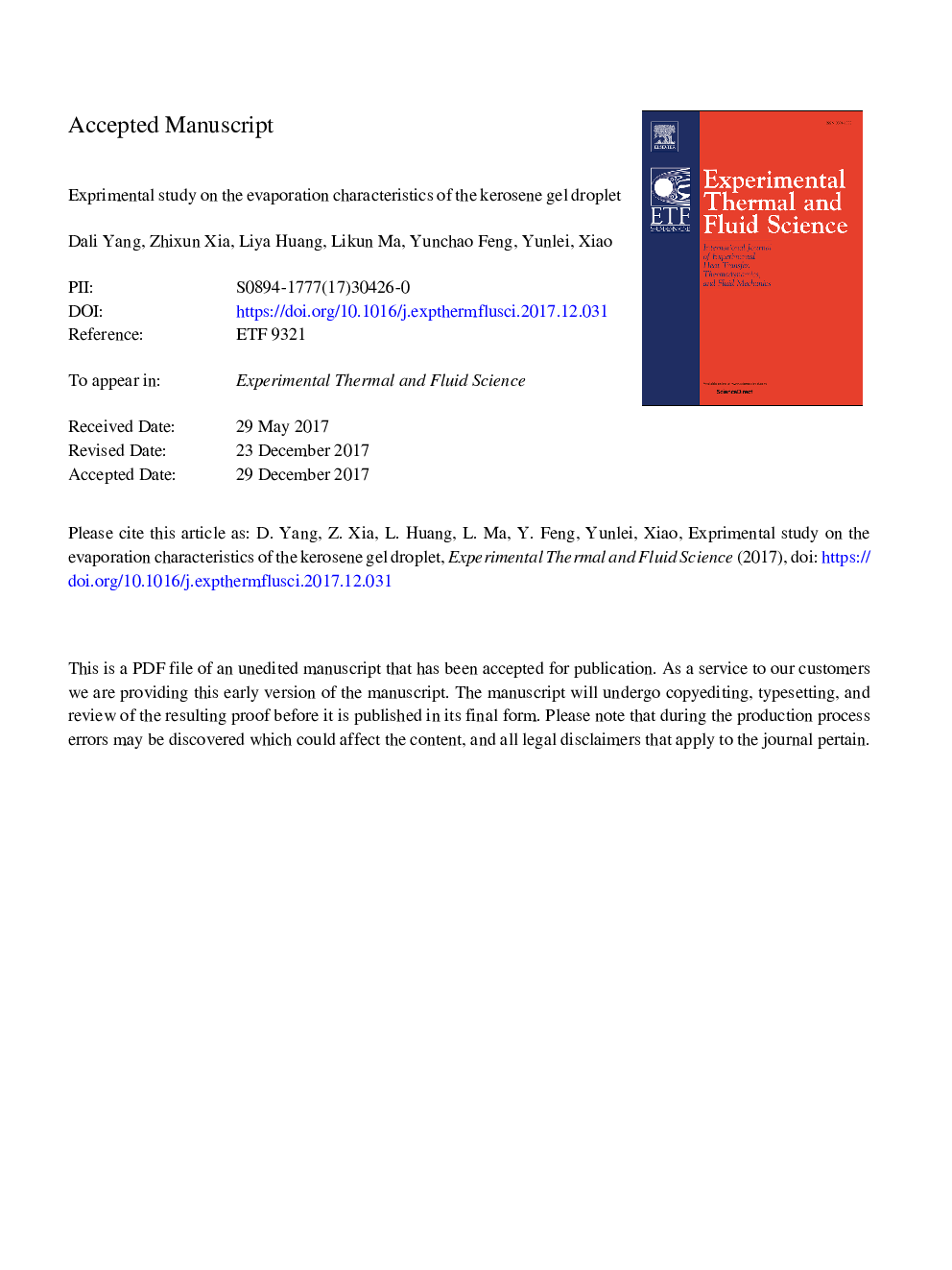| Article ID | Journal | Published Year | Pages | File Type |
|---|---|---|---|---|
| 7051788 | Experimental Thermal and Fluid Science | 2018 | 21 Pages |
Abstract
The purpose of this study is to investigate the evaporation characteristics of a single kerosene gel droplet experimentally. An isolated kerosene gel droplet with an initial diameter of â¼2â¯mm is suspended at the welding point of a thermocouple wire, and is suddenly exposed to an elevated temperature (in the range of 100-500â¯Â°C) at atmospheric pressure (0.1â¯Mpa) under normal gravity. The droplet changing process is observed and recorded by a high-speed image formation system. The results indicated that the evaporation process of a single gel droplet can be divided into three stages: the stage of the evaporation of kerosene; the stage of the gellant layer formation; the stage of the swell of the gellant layer and microexplosion taking place. Several unique phenomena, such as bubble nucleation, gellant layer formation, disruption of gellant layer, and slight explosion of the initial droplet were observed. Then the dn2/d02-tn/d02 curve was acquired by processing the images, which indicated that the evaporation rate of kerosene gel resembled the evaporation rate of pure kerosene droplet at a relative low temperature. However, microexplosion would occur when the environment temperature exceeds the boiling point of kerosene.
Keywords
Related Topics
Physical Sciences and Engineering
Chemical Engineering
Fluid Flow and Transfer Processes
Authors
Dali Yang, Zhixun Xia, Liya Huang, Likun Ma, Yunchao Feng, Yunlei Xiao,
